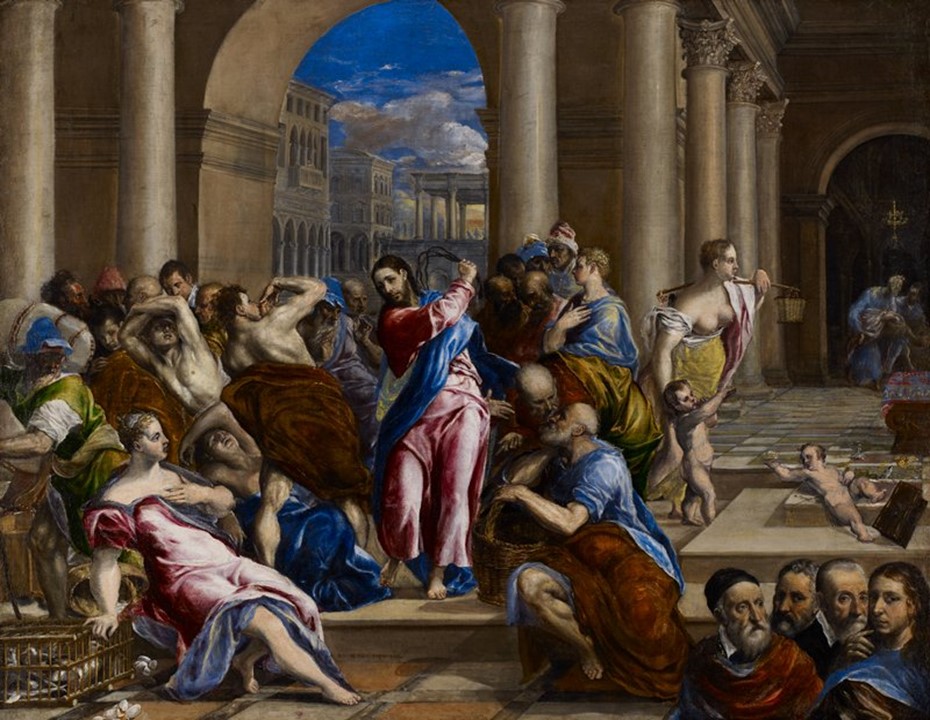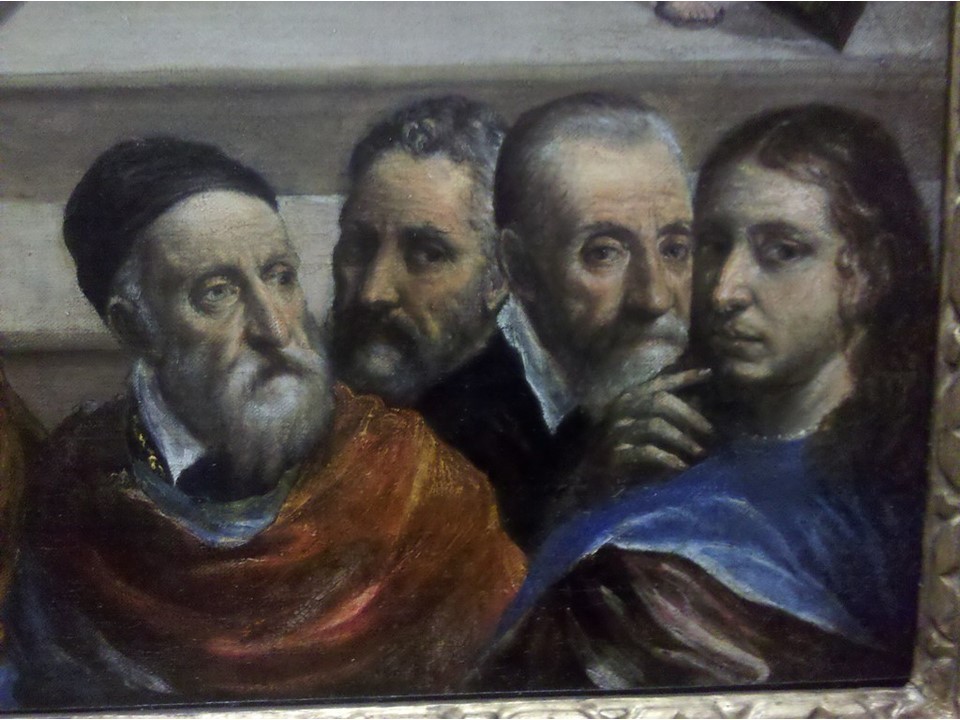
Christ Driving the Money Changers from the Temple, c. 1570-75, oil on canvas, 115.57×147.32 cm, Minneapolis Institute of Arts, MN, USA https://collections.artsmia.org/art/278/christ-driving-the-money-changers-from-the-temple-el-greco
On reaching Jerusalem, Jesus entered the temple courts and began driving out those who were buying and selling there. He overturned the tables of the money changers and the benches of those selling doves, and would not allow anyone to carry merchandise through the temple courts. And as he taught them, he said, “Is it not written: ‘My house will be called a house of prayer for all nations’? But you have made it ‘a den of robbers.’” The chief priests and the teachers of the law heard this and began looking for a way to kill him, for they feared him, because the whole crowd was amazed at his teaching. When evening came, Jesus and his disciples went out of the city. (Mark 11:15-19 Holy Monday – Μεγάλη Δευτέρα) https://www.biblegateway.com/passage/?search=Mark%2011&version=NIV
El Greco’s painting of Christ Driving the Money Changers from the Temple in The Minneapolis Institute of Arts presents a dramatic scene from the New Testament, told in all the Gospels. According to the Gospels, Jesus entered the Temple in Jerusalem and became angered by the commercial activities taking place there. He overturned the tables of the money changers and drove them out, accusing them of turning the temple into a marketplace. This scene was rarely painted in its own right before the Reformation. After the Council of Trent, it gained a new significance and for the Catholics, the image came to symbolize the purification of the Church through internal reform. https://collections.artsmia.org/art/278/christ-driving-the-money-changers-from-the-temple-el-greco
The Minneapolis painting is known for its powerful composition, dynamic figures, and vibrant colors. It was probably executed in Rome, in about 1570/1575. Set in a grand architectural interior, the scene reflects El Greco’s experiments with Italian linear perspective and break from the Byzantine style he employed in the Greek icons painted, while in Crete, in his youth. The composition seems less crowded, and the figures, distorted, but fuller and more clearly articulated, dominate the spatial setting. The lines are bold, the brushstrokes are expressive, and the colours are intense and pulsating. The use of light and shadow is masterful, casting a theatrical glow over the scene, highlighting the central figure of Christ, and adding to the sense of drama. Overall, the painting is a powerful and emotive depiction of this moment in the life of Jesus. https://collections.artsmia.org/art/278/christ-driving-the-money-changers-from-the-temple-el-greco
Christ Driving the Money Changers from the Temple is a theme that interested El Greco throughout his career. He painted this subject at least five times. What distinguishes the Minneapolis version is the inclusion of four male portrait heads in the lower-right corner of the painting. It turns out that these four men are famous artists whose lives and work inspired El Greco. They are four major figures in the arts during the Renaissance, and they are, from the left: Titian, Michelangelo, Giulio Clovio, and Raphael.
For Holy Monday – Μεγάλη Δευτέρα and a PowerPoint of all five versions of El Greco’s painting of Christ Driving the Money Changers from the Temple, please… Check HERE!

Christ Driving the Money Changers from the Temple (Detail), c. 1570-75, oil on canvas, 115.57×147.32 cm, Minneapolis Institute of Arts, MN, USA https://www.flickr.com/photos/museumnerd/5207337688